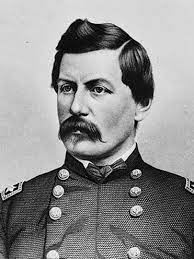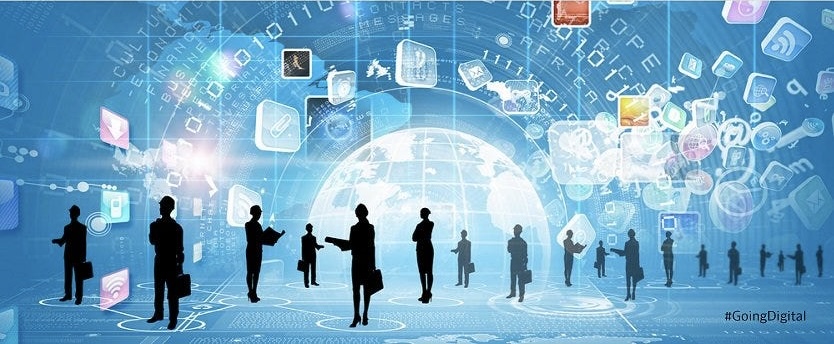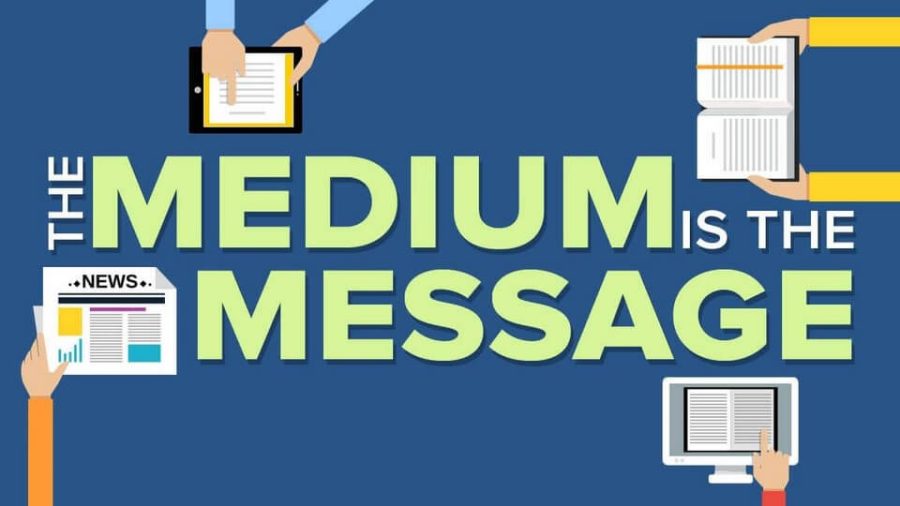
Introduction
In our digital age, how we receive information is pivotal, echoing the essence of Medium Theory by Marshall McLuhan. His iconic phrase, “The medium is the message,” underscores that the method of information delivery molds our comprehension (Grafton, 2021). Let’s explore how this theory significantly influences our lives, shedding light on the intricate interplay between the medium and the messages that define our digital experience.

The Power of Mediums
According to Lou et al. (2023), various mediums, such as TV, radio, and social media, possess distinct qualities that shape our perception of the messages they convey. Consider it this way: receiving news on TV evokes a different experience than reading it in a newspaper. Each medium carries its characteristics, influencing how we interpret and engage with information. In today’s digital landscape, social media emerges as a significant medium, profoundly impacting how we connect and share our lives. Its immediacy and global reach set it apart, altering the dynamics of communication and personal expression (Zaporozhets, 2023). Recognizing the unique traits of these mediums is essential in understanding the profound influence they exert on our thoughts, interactions, and the construction of our digital identities.
Changes in Society
The evolution of communication methods parallels societal shifts. From traditional face-to-face interactions to written communication and now to online sharing, each transition reshapes our way of life (Sjølie et al., 2022). In the digital age, characterized by rapid messages and global connectivity, the impact is substantial. It’s not just about the content of our messages but also about the medium through which we convey them. The immediacy and expansive reach of digital communication alter the dynamics of how we express ourselves, forging a new landscape where the “how” and “where” of communication become integral elements in understanding our evolving society (Allioui et al., 2023). Recognising these changes is key to navigating the complexities of the digital era and appreciating the transformative power embedded in our modes of interaction.

Identity in the Digital World
Özcan (2023), urged that consider your social media profile as a canvas for self-expression. What and how you share are intricately influenced by the specific platform you engage with. This is the juncture where Medium Theory intersects with our personal lives. Social media becomes a tool shaping how we present ourselves, exerting a profound influence on our identity. It transcends the simple question of who we are; rather, it delves into the nuanced art of how we portray ourselves in the digital realm (TayranoÄŸlu, 2023). The platform’s features, audience dynamics, and communication style all play roles in crafting this digital identity. Acknowledging this dynamic relationship between Medium Theory and our online presence is pivotal, as it prompts us to navigate social media consciously, understanding the impact it holds on our self-representation and the construction of our digital selves (Lauvli, 2023).
Conclusion
In essence, Medium Theory is our guide to decoding the digital realm. It illuminates the non-neutrality of message delivery, shaping the very essence of what we receive. Whether scrolling through social media or engaging online, understanding the influence of the medium empowers us to navigate this digital landscape. It’s a tool that reveals the power embedded in how messages reach us, prompting a deeper awareness of the transformative dynamics at play in our digital lives.
References
Allioui, H. and Mourdi, Y., 2023. Exploring the Full Potentials of IoT for Better Financial Growth and Stability: A Comprehensive Survey. Sensors, 23(19), p.8015.
Grafton, L.J., 2021. Communication as Change: Marshall McLuhan and a Transformation Model of Communication (Doctoral dissertation, Duquesne University).
Lauvli, H.H., 2023. Perceptions of Selves: Beyond the Skin Bag-Analyzing self-representation and ethos in creative digital artifacts (Master’s thesis, The University of Bergen).
Lou, C., Taylor, C.R. and Zhou, X., 2023. Influencer marketing on social media: how different social media platforms afford influencer–follower relation and drive advertising effectiveness. Journal of Current Issues & Research in Advertising, 44(1), pp.60-87.
Özcan, Åž.Z., 2023. WHAT IS IN A SCHOOL BAG: SOCIAL IDENTITY, SCHOOL BAGS, AND SOCIAL MEDIA COMMUNICATION (Master’s thesis, Middle East Technical University).
Sjølie, E., Espenes, T.C. and Buø, R., 2022. Social interaction and agency in self-organizing student teams during their transition from face-to-face to online learning. Computers & Education, 189, p.104580.
Tayranoğlu, O., 2023. Plug’n’Play: Peeking out of the closet into the visibility paradigm.
Zaporozhets, O., 2023. Navigating the Smartphone Era in Times of War.

